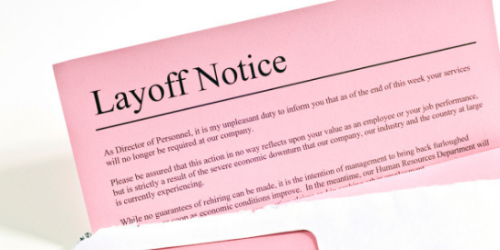As some districts have already begun to issue pink slips, new data confirms the likelihood of teacher layoffs when ESSER relief funding officially expires on September 30. Given that ESSER funds account for up to one in six state education dollars, the fiscal cliff will be steep.
In a new CALDER working paper, Dan Goldhaber, Grace Falken, and Roddy Theobald set out to determine just how much of the nearly $200 billion federal investment in K–12 schools was put toward hiring—and, as a result, how many positions may need to be cut when the funding runs dry this fall. It’s an important question not only for teachers, but also for students, whose learning is affected by teacher turnover.
Focusing on Washington State, the researchers examined the impact of ESSER on school district hiring and whether specific job categories (administration, athletics, facilities, food services, health, paraeducators, principals, superintendents, teachers, and transportation) were more affected than others. They found that for every $1,000 allotted in ESSER funds, districts added $229 in salary costs to their budgets. In total, districts hired $497 million in new school staff, and the largest share was teachers.
By “scraping” district websites for novel job postings (i.e., using software to extract new job postings), the researchers found that the number of job postings in Washington increased by 12,200 jobs when ESSER dollars were in play, and approximately 5,100 of those were teaching positions. (They also found a positive association between ESSER dollars and “facilities staff” and “paraeducator” hires.) Not surprisingly, more positions were filled in larger school districts.
The researchers caution that this number likely overstates how many positions districts will cut. (For instance, not all are full-time employees and some people will leave their jobs for other reasons). However, it will be difficult for districts to underwrite all the new positions when they no longer have ESSER funding, given the magnitude of these additional salary expenses.
So the question becomes: How do districts at least make these teacher layoffs less harmful for students? The typical approaches to layoffs, like seniority-based, last-in-first-out (LIFO) policies, and over-issuing pink slips, (and then re-hiring those same teachers a few months later) can have direct and indirect negative effects on student achievement. LIFO policies, which are widespread, are harmful to teacher diversity and pose a threat to teacher quality, and over-issuing pink slips diminishes the quality of instruction as teachers fret over whether they will have a job.
To promote effectiveness and equitable access to great teachers, the researchers suggest that districts would be prudent to:
- Protect teachers from layoffs in specific shortage areas, like special education and STEM subjects.
- Protect teachers in hard-to-staff schools.
- Examine processes for layoff notifications to prevent over-issuing (collective bargaining agreements often require notifying teachers if there is potential for layoff in the coming school year).
- Eliminate LIFO policies—or, at a minimum, consider seniority alongside other criteria related to teacher effectiveness.
More like this

Raising a red flag: LIFO policies harm teacher diversity, teacher quality, and student learning
As ESSER funding depletes and teacher layoffs set in, school districts should consider teacher performance and other alternatives to last-in-first-out.

Teacher layoffs may be coming. How do districts decide who to let go?
An analysis of layoff policies in 148 of the largest U.S. school districts explores how they may impact the teacher workforce and the student population

The very real damage to student learning from pink slips
Here’s a legitimately scary topic never far from teachers’ minds when the economy takes a downturn: the threat of being laid off.

